
Blueberries are an incredibly popular bush for home gardeners and homesteaders alike. But so often, people get advice that’s vague or confusing when they set out to plant them, and they end up with twiggy bushes in the backyard and a few handfuls of berries. It only takes a year or two of this frustration before they tear out the blueberry bushes.
To get consistent yields, year after year, there are a few tips and tricks you need to know, and most of them start before you even plant the bushes.
If you’re ready to grow amazing blueberries, let’s talk about the secrets you need to know for success.
If you read to the end, I’ve got a trick for quickly picking handfuls of perfectly ripe blueberries.
Let’s dive in.
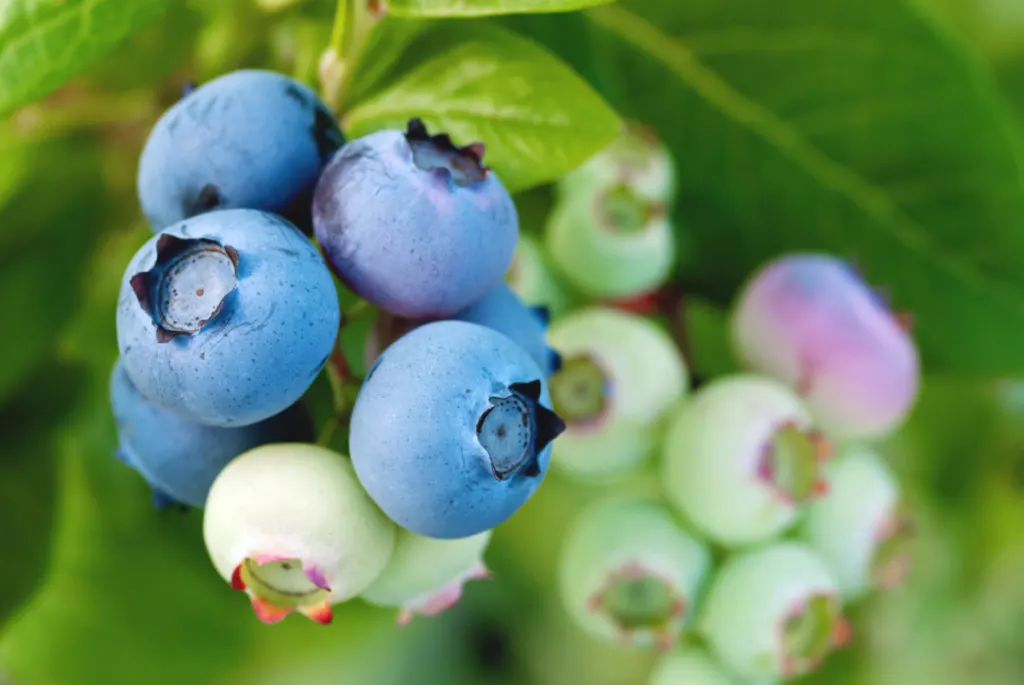
1. Be Patient
This is probably the most important tip I can give you.
Unlike many other gardening endeavors, planting blueberries that will yield a delicious and robust crop year after year takes time and planning. Years, in fact. It’s not like growing tomatoes where you put your plants in the soil, and voila, you have fresh salsa and homemade pasta sauce a few months later.
It’s best to spend the time setting yourself up for success than to rush in and be disappointed by your results.
Or worse, have dead plants and have to start all over again.

So, if you were hoping to plant blueberries this spring and be up to your eyeballs in delectable berries this summer, I would suggest instead that you find a local pick-your-own berry farm to enjoy. While at the same time, you plan and nurture your bushes into maturity.
2. It’s a Match
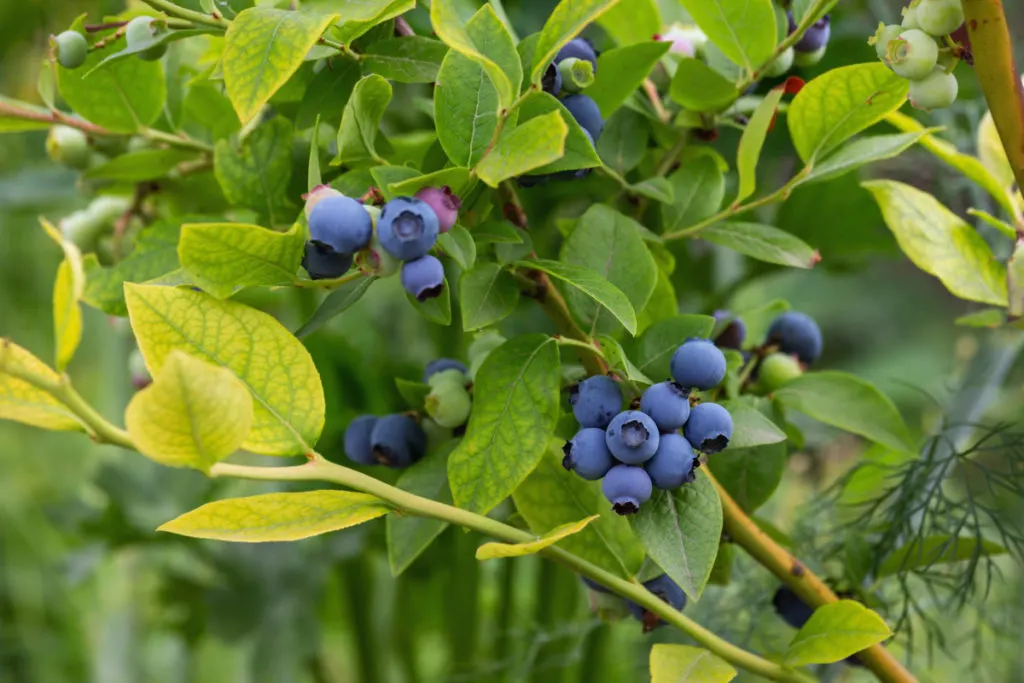
There are plenty of plants out there that you can poke in the dirt, anywhere in the country, and it will grow. I’m going to let you in on a little secret – blueberries aren’t one of them.
So often, folks rush out and grab or order the first blueberry bush they find that says “high-yield” in the description. They don’t pay any attention to the zone it’s been cultivated for.
To get the best blueberry bang for your buck, you need to know which bush type grows where you live.
If you live in warmer areas, growing zones 7-10, or areas with mild winters, be sure you’re choosing a southern highbush or rabbiteye variety. A few to try are:
Southern Highbush
Emerald, Reveille, Top Hat, or Misty
Rabbiteye
Climax, Montgomery, Titan, or Woodard
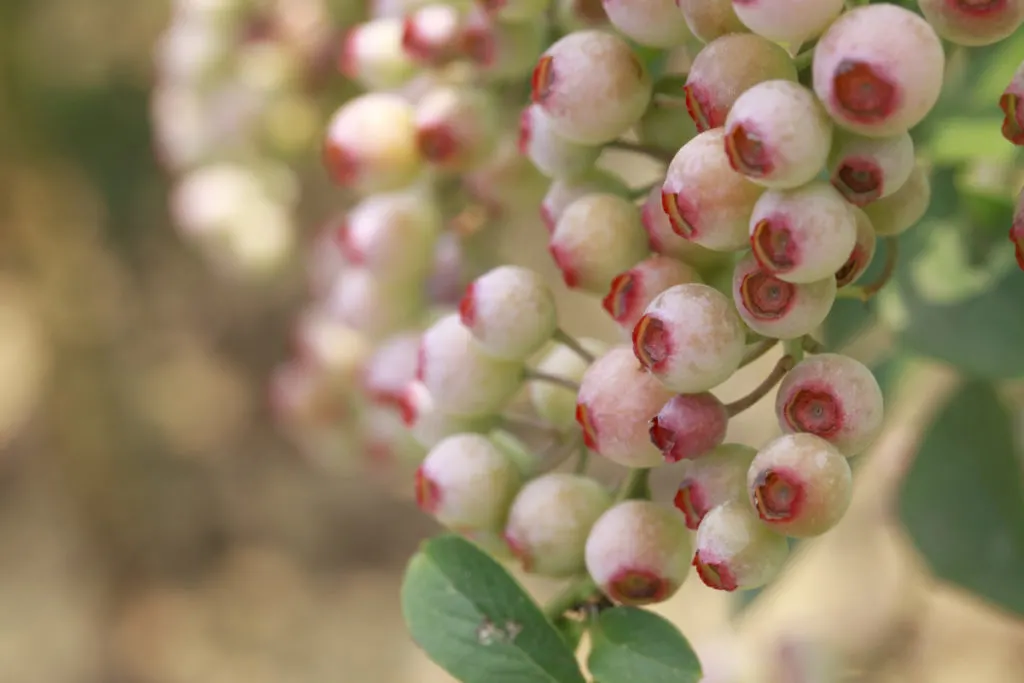
If you live in cooler areas, growing zones, 3-6, with cold winters, choose northern highbush or lowbush varieties. A few to try are:
Northern Highbush
Duke, Hardyblue, Patriot, or Rubel
Lowbush
Chippewa, Polaris, and Ruby Carpet
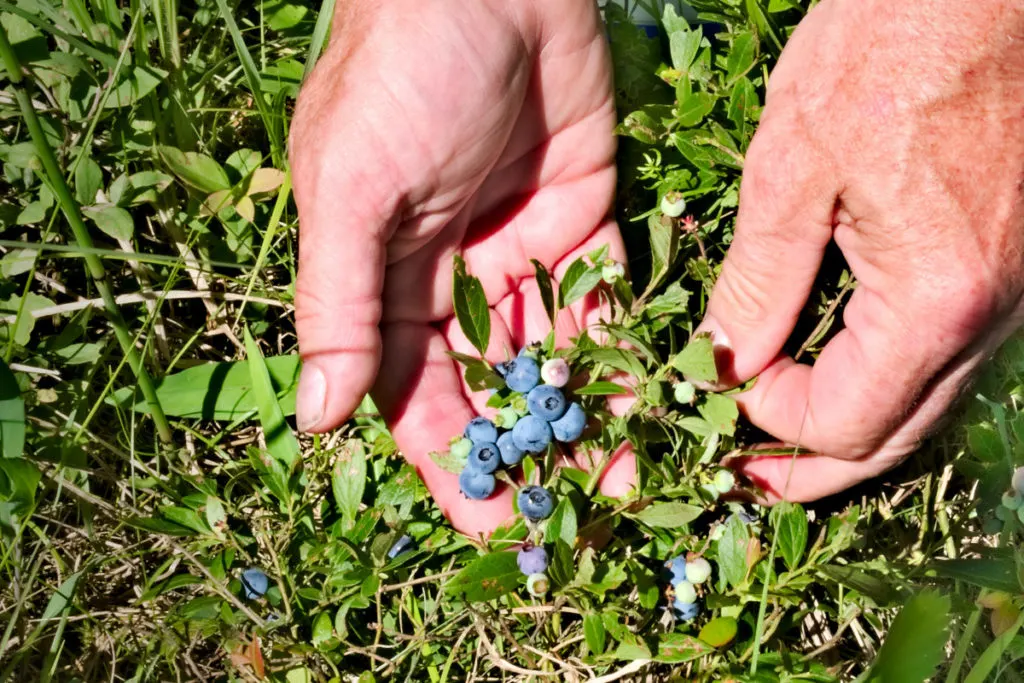
There are dozens of varieties of blueberry bush. Picking the right variety for your area is key. Nature Hills Nursery offer many varieties of blueberry for sale here, listed by grow zone. Use the zone selector to limit blueberry varieties that work in your zone.
3. All the Blueberries, All the Time
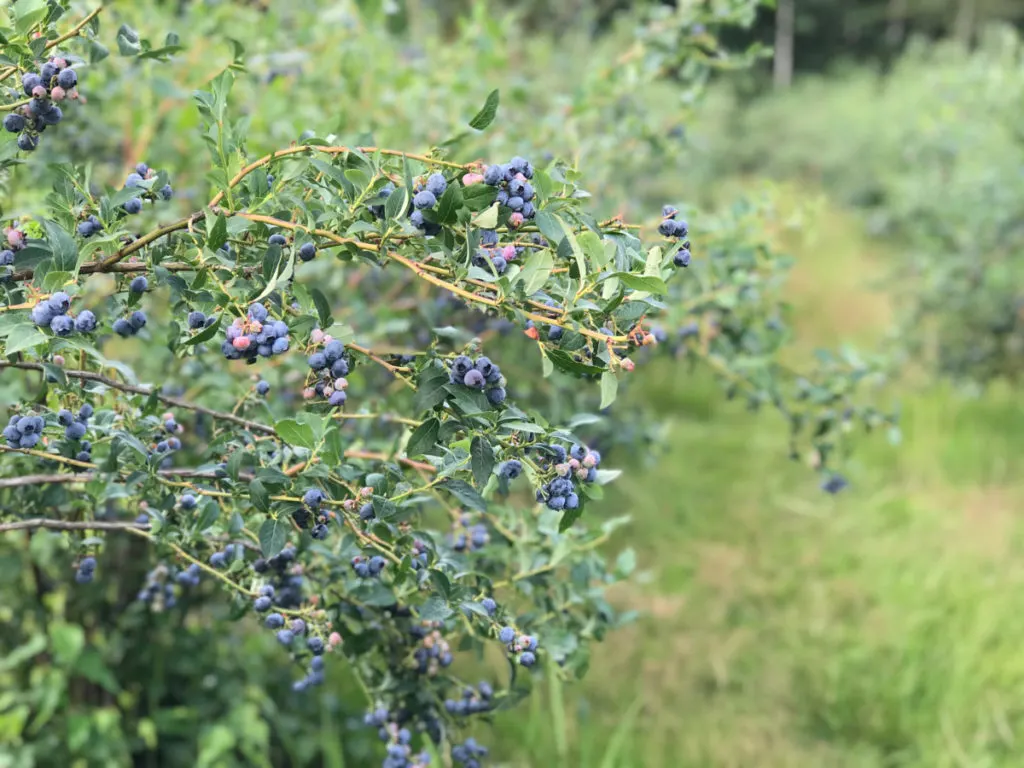
If you want to stretch your blueberry harvest over a month or two, rather than a couple of weeks, grow more than one variety.
Along with paying attention to whether you’ll be growing a southern highbush or northern lowbush, etc., check to see if the variety you’re choosing is an early, intermediate or late producing.
For the longest possible blueberry season in your backyard, grow one of each; doing so, you’ll successfully stagger your blueberry harvest and end up with plenty of delicious berries.
4. Take the Time to Test the Acidity of Your Soil – Multiple Times
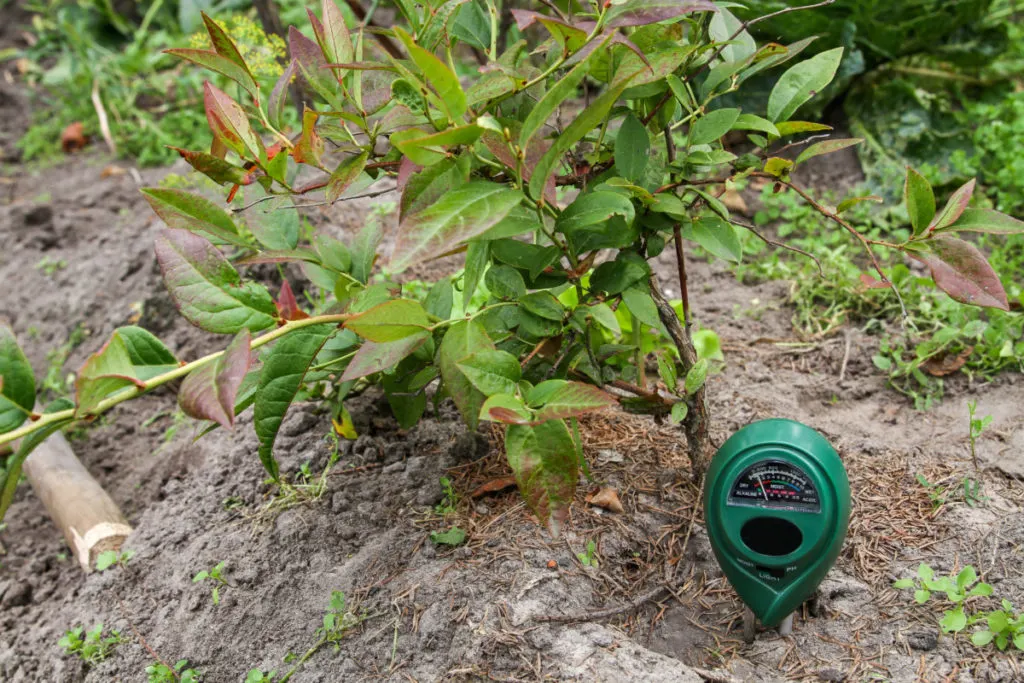
Let’s say you’re making soup.
But Tracey, we’re planting blueberries.
Yes, I know, just play along with me – we’re making soup. Not only are we making soup, but we’re also having company over for dinner to eat it.
You wouldn’t make soup and serve it to your guests before tasting it, right? Right.
Let’s say you taste it and decide it needs salt, so you add some salt. Do you immediately serve it to your guests? No, of course not; you’d taste it again to make sure the salt you added improved the flavor the way you wanted it to.
Many folks who grow blueberries never taste their soup. But we’re not ‘many folks,’ are we?
Blueberries love acidic soil, and I’m going to guess that if you’re reading this, you already knew that. If you want to give your blueberries an edge, test your soil well before you plan on planting them.
Changing the soil’s pH takes time, and no one really talks about this after advising that “blueberries prefer acidic soil.”
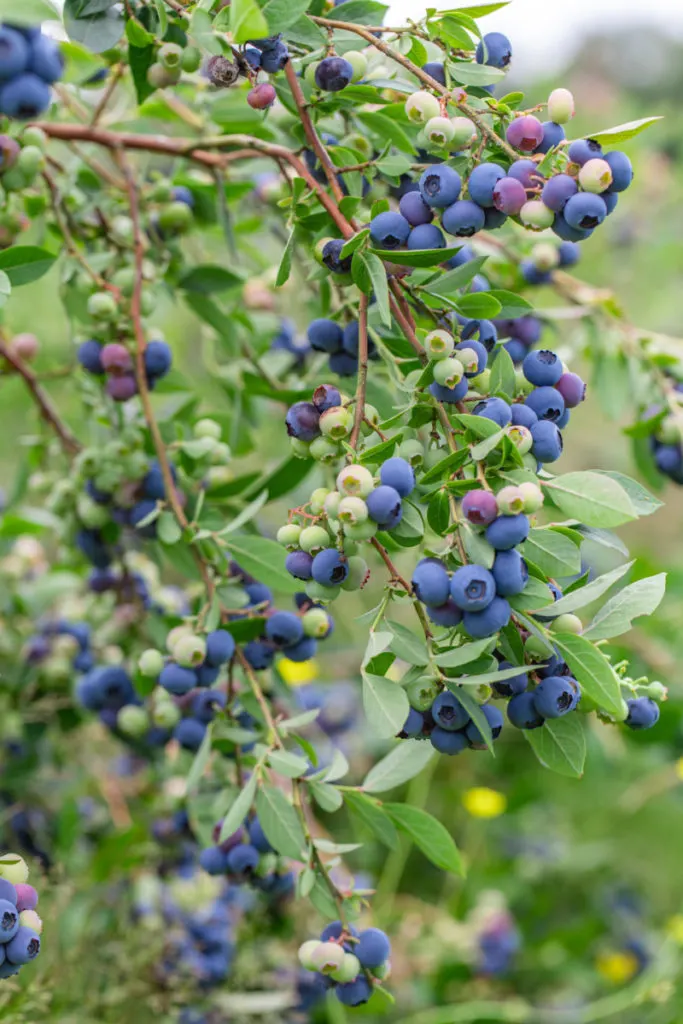
So often, people dump some expensive acidifying product into the ground, then plunk their blueberry bush in and wonder why they aren’t getting blueberries
But not you.
You’re smart, so you’re going to test your soil way before you plan on planting your bushes. I’m talking at least six months, even a year. If you’re planning a spring planting, test in the fall, and vice versa.
You’re aiming for a pH between 4. and 5. Soil pH meters are incredibly cheap. Here’s a decent one. (Scrub the probes with steel wool or a wire brush before using them to get accurate readings.)
If you need to amend your soil to make it more acidic, it’s important to retest to make sure whatever you added worked.
This way, you know if you need to add more acid, and you’ll know when your soil has hit the magic pH for happy, healthy blueberries.
Remember how I said we were going to test more than once? Once you’ve reached your optimal pH, you need to retest every year after the growing season and amend as needed.
5. Elemental Sulfur
Speaking of making your soil more acidic, here’s a little tip to help you with that.
There are plenty of products out there you can use to acidify your soil. They all promise amazing results if you use them. Your best option is quite simple – elemental sulfur. Granulated elemental sulfur is even better.
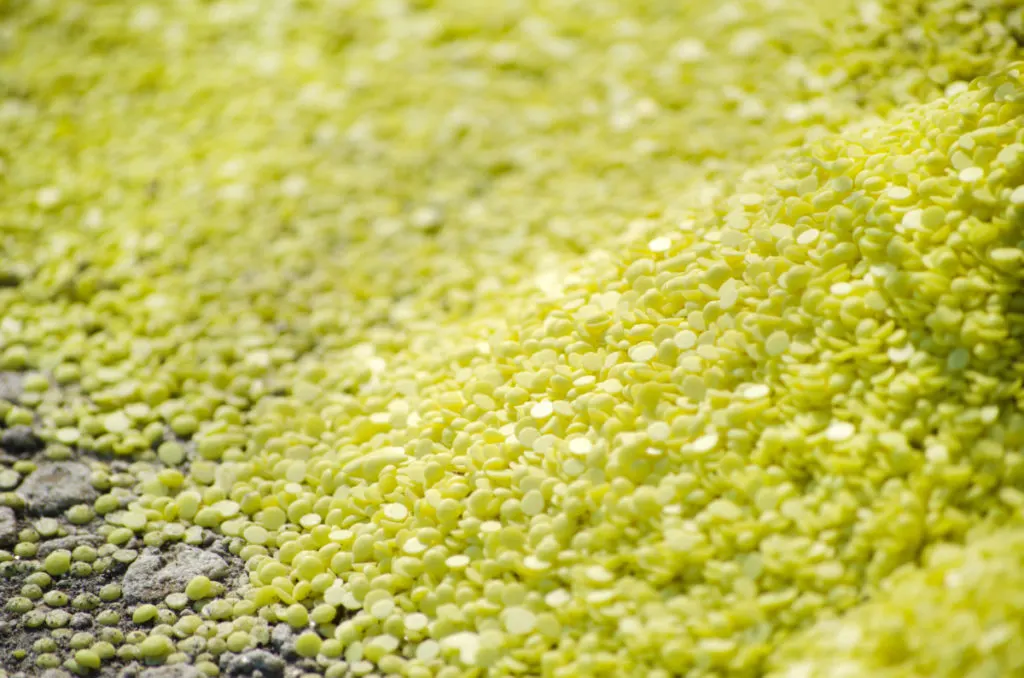
Most of these fancy products are made with the stuff anyway, and you don’t have to worry about all of the other additives they put in their “special” blend.
You can use elemental sulfur for several other gardening tasks, such as keeping snakes away from chicken coops and controlling flea and mite infestations in your yard.
6. Yes, Yes, We Know Blueberries Love the Sun
Much like hearing how blueberries need acidic soil, you’ve probably had it drilled into you that they require full sun. But while you’re scouting your yard for that perfect spot that gets full sun all day long, you’re probably overlooking another important growing factor – moisture.
Yes, sun is important, but blueberries also love moisture-rich soil. Pay attention to how much wind the spot you’ve chosen gets. If you’ve got a sunny patch that gets a lot of wind, the soil will dry out quicker.
Also, are there trees nearby? Like the wind, those trees will steal that much-needed moisture from the soil.
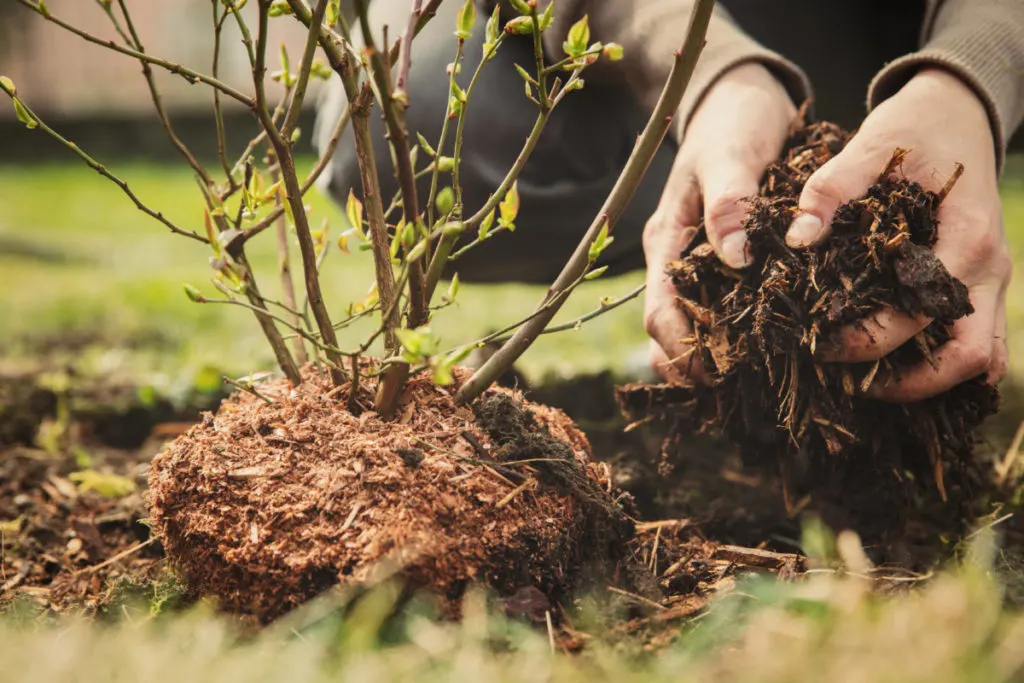
Once you’ve found your perfect sunny spot with a windbreak and no nearby trees, you should mulch your bushes too. This will help hold in that moisture.
7. Baffling the Birds
Let’s say you do everything right. And now you’ve got blueberry bushes that are starting to produce some nice berries. Chances are the birds are going to notice as well.
You’ve probably read that the best way to protect blueberries from birds is with netting.
This is true.
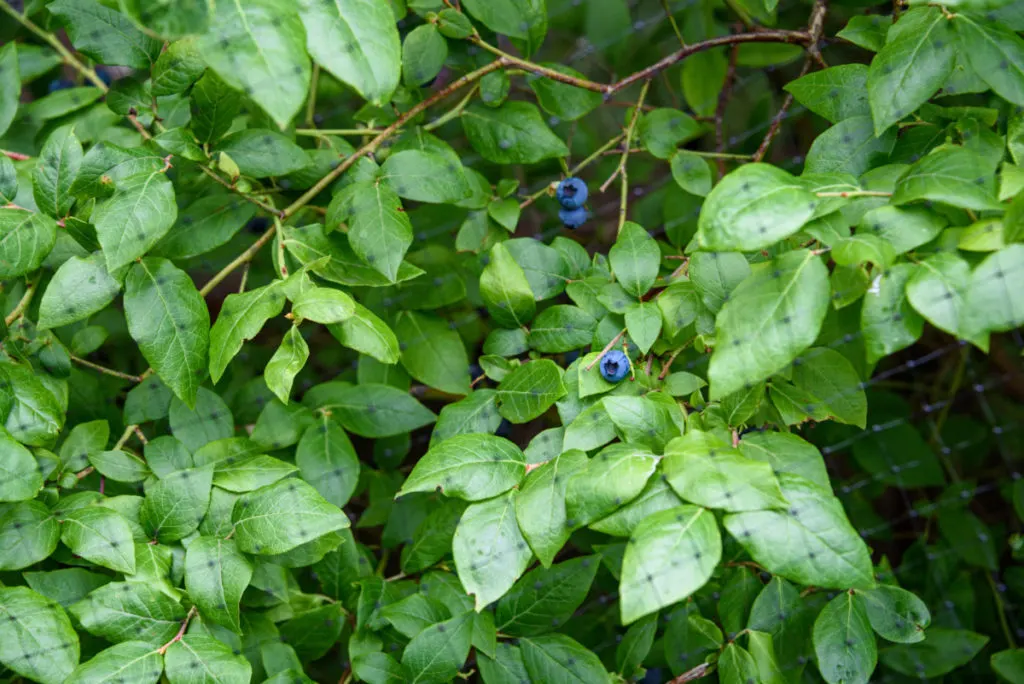
But there’s a trick to it. If you’re going to put the netting directly on the bushes, wait until after the bush has flowered and it’s started fruiting. Otherwise, you risk knocking off the flowers before you get berries.
However, birds can still just eat the berries through the netting.
The best way to protect your berries with netting is to set up a tent or gazebo-like structure to lay the netting over so it’s up off your bushes.
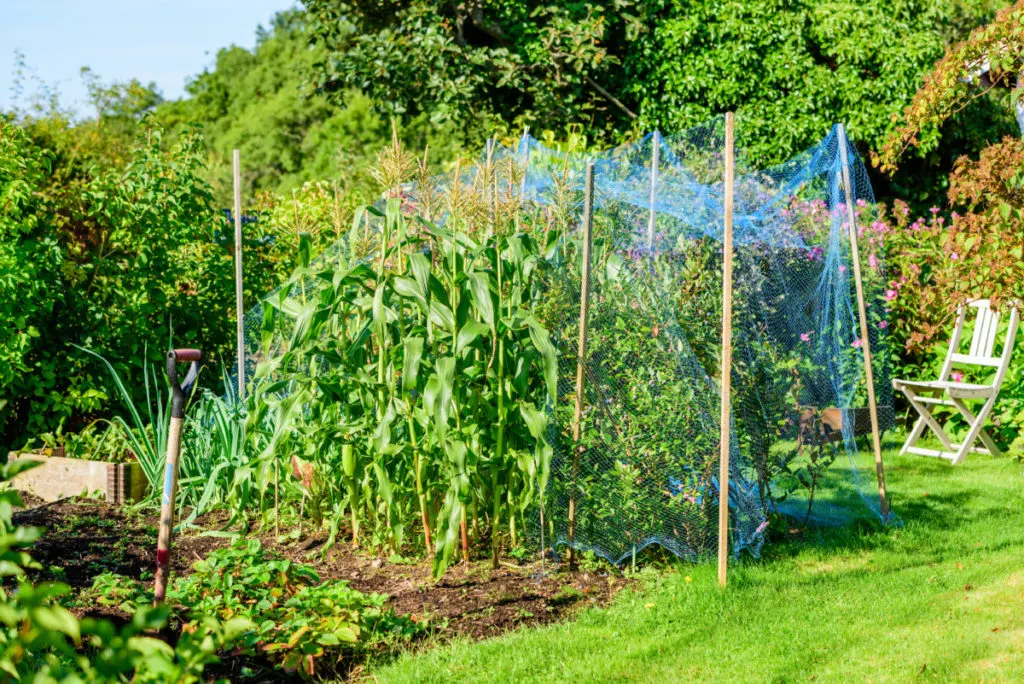
Birds are smart. They catch on quickly. So, you may wish to employ several deterrent methods rather than just one. And rotate them every week or so. The best thing you can do is keep them guessing.
- Put up a scarecrow.
- Set up an owl decoy; better yet, make it two.
- Tie old CDs or flash tape to the branches of your bushes.
- How committed to fresh blueberries are you? You could go straight up commercial blueberry farmer and periodically set off your propane cannon. (If the neighbors complain, you didn’t get this idea from me.)
8. Skip the Containers
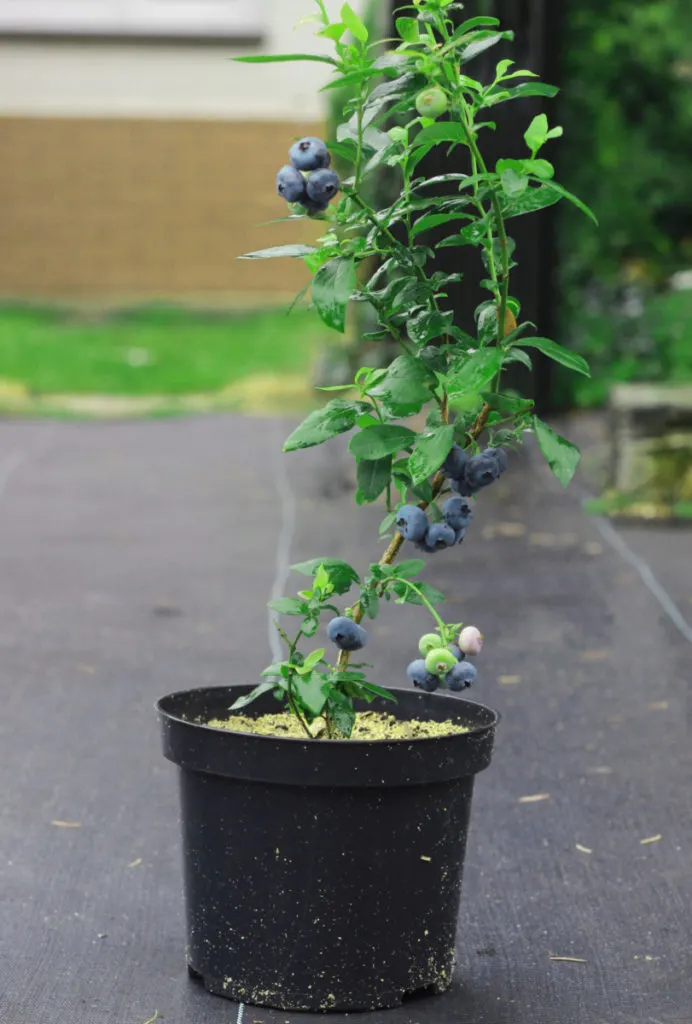
I’m making a rather controversial statement because, technically, you can grow blueberries in a container. But I can also technically survive on pizza and ramen noodles. That doesn’t mean it’s good for me or that I will be healthy and happy.
If you’re after abundant, blueberry bushes that will last for years, they need to be planted in the ground.
I know, it’s not fair. As a second-story apartment dweller, I, too, dreamed of growing a few blueberry bushes in 5-gallon buckets and enjoying my own little portable blueberry patch.
We keep seeing advertisements or reading about varieties of blueberries that “do well” in containers. Mostly this is a lot of waffle meant to sell blueberry bushes, which end up dying from neglect a year or two later.
The truth is, it takes several years for blueberries to become established and several more years after that for them to produce prolific yields.
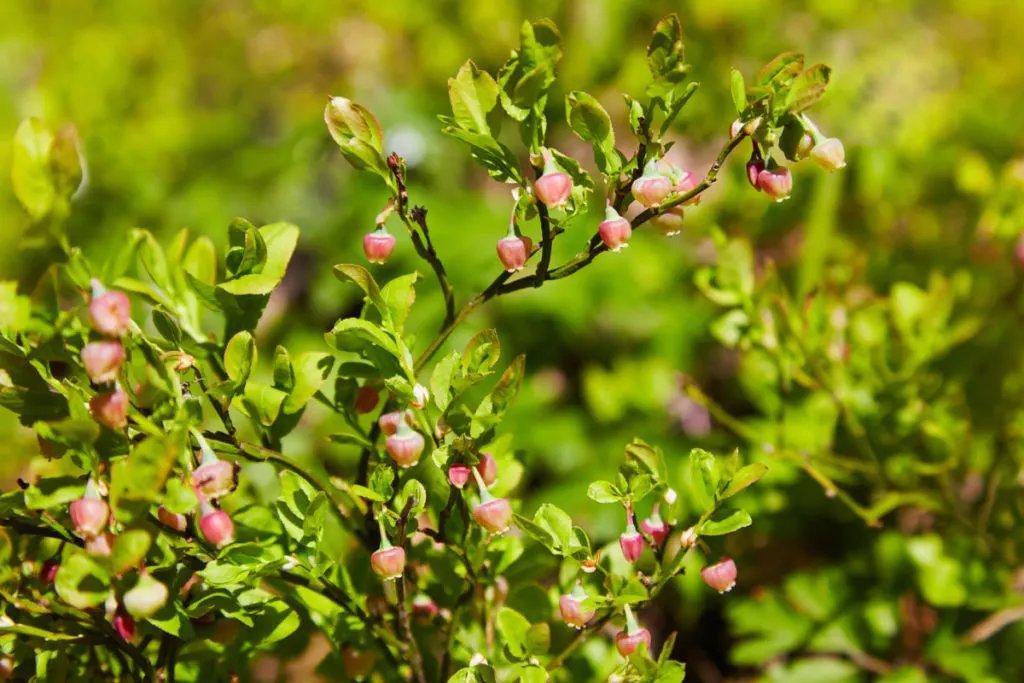
If you have any experience growing plants in a container, you know the amount of work involved to keep them alive for any length of time, let alone getting a container-grown plant to thrive.
Container-grown blueberries need to be fertilized regularly. And remember how they like moist soil? In a container, they will need to be watered every few days, sometimes a couple of times a day in very hot weather.
Now imagine doing all that work for five years.
So yes, you can grow blueberries in containers, but it’s so much more work to do so successfully.
Growing healthy blueberry bushes is an investment of time. Don’t waste your time; plant them in the ground.
9. Be Patient
Yes, I know I already said this. But because it’s so important, this tip bears repeating.
Growing blueberries is a long game. People often purchase a blueberry plant, plunk it in the ground and then get frustrated when they aren’t making homemade blueberry pies by the dozen that same year. Or even the next year.
Growing blueberries takes time; usually, 4-5 years before you’ll begin to see consistent, healthy harvests.
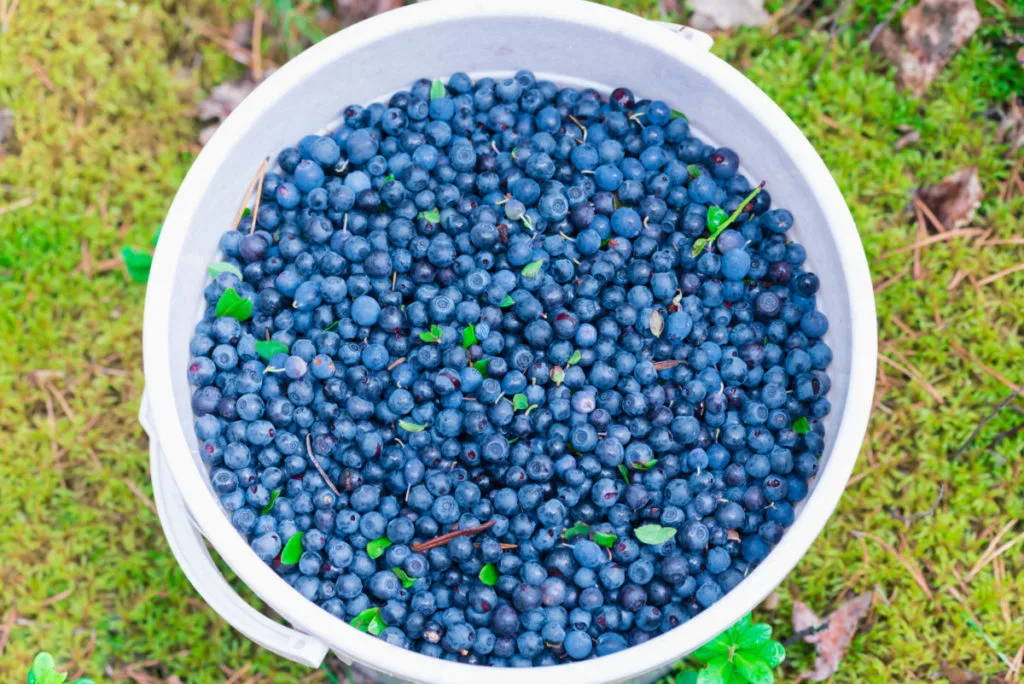
But we know all the secrets to getting your bushes off to a good start, so five years from now, you’ll be enjoying blueberry jam, blueberry muffins, blueberry syrup, blueberry basil mead, blueberry pancakes…you get the idea.
Whenever I approach projects like this, where I won’t see my work’s efforts for a long time, I go into it with this thought – five years will come and go no matter what I do. Five years from now, you can either have gorgeous blueberry bushes loaded with berries or still be wishing you had planted them.
Bonus Super-Secret Trick to Picking Handfuls of Perfect Berries
Of course, you’re smart, so you’ll put these tips to good use and be enjoying blueberries down the road. And when you do, you’ll want to pick only the ripest ones, so they’re extra sweet, leaving the others to continue to ripen.
It’s easy and quick to do so.
Simply cup both hands around a cluster of blueberries and gently brush and rub your fingers around the cluster. The ripest blueberries will easily pop off into your cupped hands, leaving the unripe berries undisturbed on the branch.
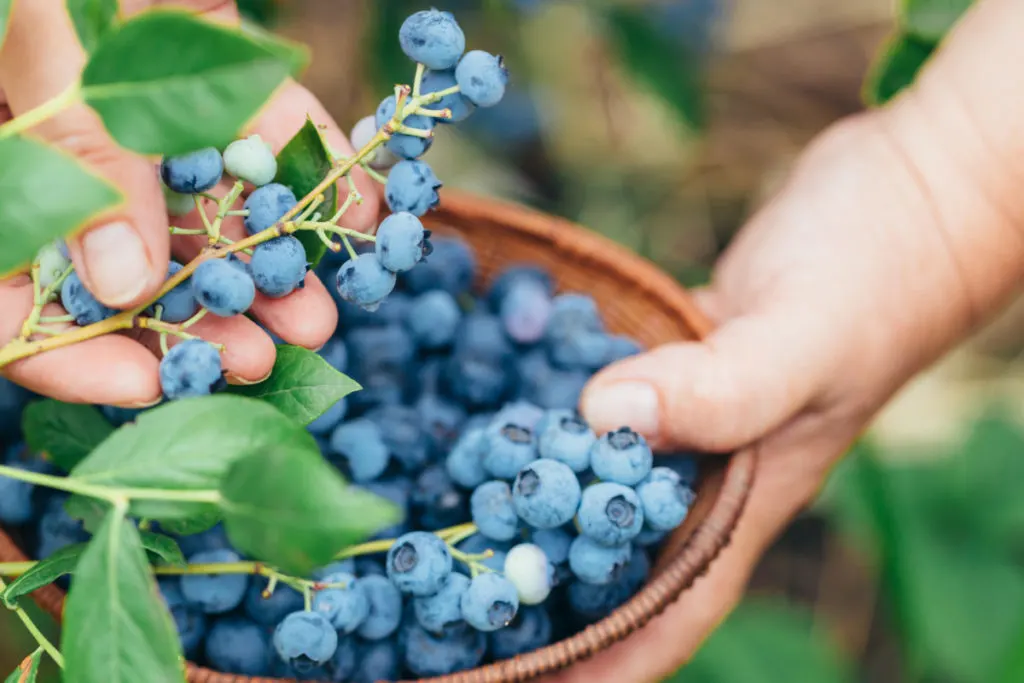
I hope you’re in for the blueberry long haul. It’s well worth it. And it’s always easier to do the job right with a few helpful tips and tricks.
Ready to start your blueberry growing adventure? Purchase a bush that’s perfect for your grow zone at Nature Hills below.

Get the famous Rural Sprout newsletter delivered to your inbox.
Including Sunday musings from our editor, Tracey, as well as “What’s Up Wednesday” our roundup of what’s in season and new article updates and alerts.

